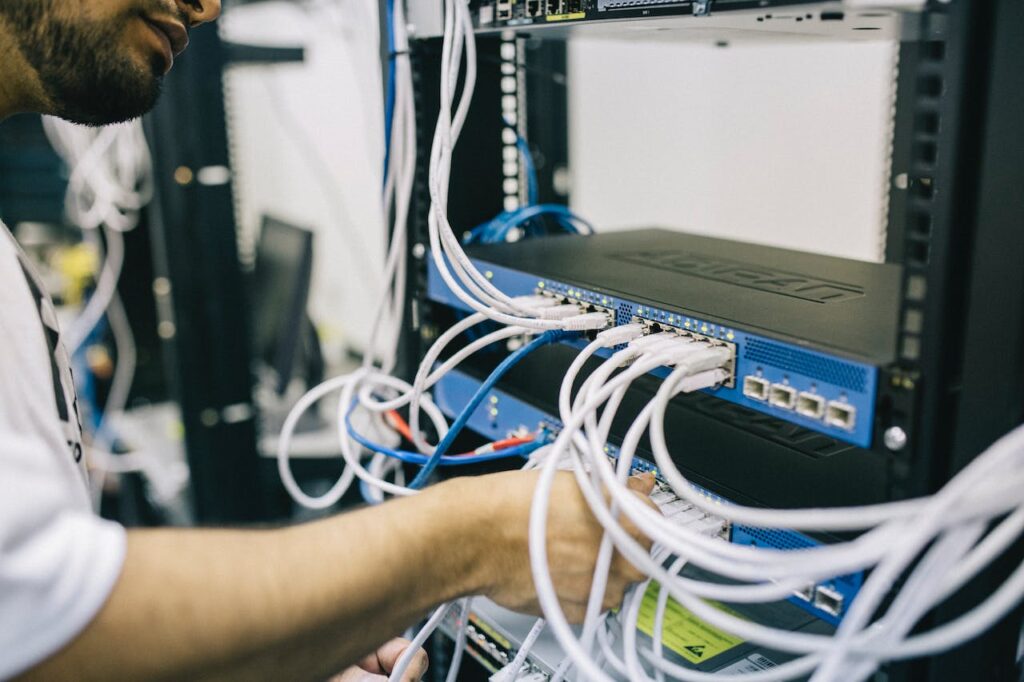Introduction
You wake up to a news alert flashing across your screen. A shocking headline screams: “Classified documents leaked! National security at risk!” Your stomach lurches. Is your personal information exposed? Are foreign powers now privy to your nation’s most guarded secrets?
This, my friends, is the unsettling reality of spillage in cybersecurity. Not something out of a spy thriller, but an increasing danger that is concealed in the background of our digital age. The silent leak, the inadvertent disclosure of private information, the trickle-drip-drip of secrets falling into the wrong hands
Moreover, it goes beyond government secrets and classified papers. Spillage can happen to anyone, anywhere. Sensitive financial data slipping through the cracks of a corporate network. Private medical records floating freely on the dark web. Even those embarrassing vacation photos accidentally shared with the entire world.
Table of Contents
Demystifying the Different Faces of Spillage(Spillage in Cybersecurity)
Now that we’ve grasped the chilling essence of spillage, let’s crack open its Pandora’s box and explore its distinct forms. Buckle up for a deep dive into three major types of spillage, each capable of leaving its own brand of digital devastation.
1. Data Spillage: When Private Becomes Publicly Embarrassing (or Worse)

Imagine your financial records waltzing across the internet, hand-in-hand with your social security number. Or picture your most sensitive medical information plastered across the dark web. That’s the chilling reality of data spillage, where confidential information like PII (Personally Identifiable Information), financial data, and internal business documents escape their secure havens and find themselves frolicking in the wild, unsanctioned corners of the web.
This spill can happen in myriad ways, often triggered by human error. Think accidentally attaching sensitive documents to emails, uploading data to unprotected servers, or falling victim to phishing scams. Even seemingly inconsequential acts like using weak passwords or failing to update software can pave the way for data spillage, turning your digital fortress into a leaky sieve.
But let’s not paint a solely human-error picture. Malicious actors also love to exploit system vulnerabilities, unleashing malware that gleefully pilfers confidential data. And let’s not forget the insider threat, where disgruntled employees or compromised accounts can become conduits for sensitive information to vanish into the abyss.
2. Information Spillage: When Secrets Become Open Season

Remember those classified documents from our intro? That, my friends, is the domain of information spillage, where national secrets, military plans, and other highly sensitive government intel take an unauthorized vacation to the public eye. The consequences of such leaks can be catastrophic, jeopardizing national security, compromising strategic advantages, and putting lives at risk.
Just like data spillage, information spillage can be an accidental misadventure. Imagine a classified document accidentally uploaded to a public-facing server, or a careless conversation overheard by the wrong ears. Human error, once again, can play a villainous role in this drama.
However, the stage is often set for more deliberate acts of espionage. Foreign powers or malicious actors deploy sophisticated cyberattacks, planting malware and exploiting vulnerabilities to infiltrate secure systems and siphon off classified information. Even seemingly innocuous social engineering tactics can trip up unsuspecting individuals, extracting vital secrets through clever manipulation.
3. Process Spillage: When Your System Takes a Wrong Turn
While the first two types focused on information, process spillage takes aim at the very heart of your system’s operations. Imagine malware taking control of your critical infrastructure, executing unauthorized processes that wreak havoc, disrupt operations, and compromise data. This is the chilling scenario of process spillage, where malicious code takes a joyride on your system, leaving a trail of chaos in its wake.
Just like its data and information counterparts, process spillage can be triggered by both accidental and malicious means. Unpatched vulnerabilities in software or outdated security protocols can create open doors for malware to invade and run amok. Human error, again, can play a part, accidentally installing malicious software or clicking on suspicious links that unleash digital demons.
But fear not, dear reader! While these types of spillage may seem daunting, the knowledge is your shield, and understanding is your sword. In the next section, we’ll arm you with the tools and best practices to prevent these digital leaks and keep your data, information, and systems safe from harm.
Plugging the Leaks: Your Guide to Spillage Prevention

Now that we’ve delved into the murky waters of spillage, it’s time to surface with a toolkit of strategies to keep our data, information, and systems buoyant. Remember, spillage prevention is a multi-pronged approach, requiring vigilance on both human and technological fronts. So, let’s arm ourselves with knowledge and action!
1. Fortifying the Human Firewall: Awareness and Training
Think of your employees as the first line of defense against spillage. Equipping them with cybersecurity awareness training is like putting on digital armor. Teach them to identify phishing scams, use strong passwords, and handle sensitive information with utmost care. Regular training sessions on data protection policies and best practices ensure everyone’s aware of their role in keeping the information safe.
But awareness isn’t enough. Fostering a culture of security is crucial. Encourage employees to report suspicious activity, avoid sharing sensitive information via insecure channels, and maintain an attitude of caution throughout their digital interactions. Remember, prevention starts with each individual’s commitment to responsible digital behavior.
2. Building Fort Knox: Robust Security Measures

Your tech defenses play a vital role in thwarting spillage attempts. Implement strong access controls, ensuring only authorized individuals can access sensitive information. Employ data encryption to render leaked data useless for unauthorized eyes. Regularly patch software vulnerabilities and update security protocols to plug potential cracks in your digital armor.
Don’t forget the power of security awareness tools. Consider deploying email filters that flag suspicious messages and endpoint protection software that detects and stops malware in its tracks. Conducting regular security audits helps identify weak spots and address them before malicious actors exploit them. Remember, a proactive approach to security is your best bet against spillage.
3. Vigilance Eternal: Monitoring and Response
Even the best defenses can encounter breaches. That’s why constant monitoring and a rapid response plan are essential. Implement intrusion detection and prevention systems that keep a watchful eye on your network for suspicious activity. Develop a clear incident response plan outlining the steps to take if spillage occurs, from containment to communication and remediation.
Regularly test your incident response plan through simulations and drills. Practice makes perfect, and when it comes to spillage, swift and efficient action can minimize the damage. Consider engaging with cyber security experts to conduct vulnerability assessments and penetration testing, uncovering and patching any weaknesses before attackers can exploit them.
Remember, spillage prevention is an ongoing journey, not a one-time destination. By combining human awareness, robust security measures, and vigilant monitoring, you can build a formidable defense against spillage and keep your data, information, and systems safe in the ever-evolving digital landscape. Now, let’s explore the real-world impact of spillage and understand why prevention is truly a matter of paramount importance.
The Ripples of Spillage: Understanding the Real-World Consequences
We’ve explored the different faces of spillage and delved into the crucial steps for prevention. Now, let’s turn the spotlight to the chilling reality of its aftermath, understanding the far-reaching ripples spillage can create in the real world.
1. Reputational Tsunami: From Embarrassment to Erosion of Trust
Imagine waking up to news of a data breach involving your company, with customer information splashed across headlines. That’s the nightmare scenario of the reputational tsunami triggered by spillage. Loss of trust in your brand, customer churn, and public backlash can be the harsh consequences of failing to protect sensitive data.
The damage goes beyond mere embarrassment. In today’s hyper-connected world, reputational splatter can ripple outwards, affecting relationships with partners, investors, and even governments. Building trust takes time and effort, while repairing it after a spillage can be an arduous and often futile task.
2. The Financial Chasm: From Fines to Lost Revenue

Spillage isn’t just a PR problem; it can open up a gaping financial chasm. Regulatory bodies across the globe have tightened their belts on data protection, imposing hefty fines on organizations that fail to keep information secure. Data breaches also lead to expensive repair costs, including customer notification, credit monitoring, and potential lawsuits.
Lost revenue can be another crippling consequence. Consumers become wary of doing business with companies that have experienced spillage, taking their wallets elsewhere. That’s not where the harm ends. Long-term financial stability of the company may be seriously jeopardized, stock prices may plunge, and investors’ confidence may be lost.
3. Legal and Regulatory Earthquakes: Facing the Wrath of the Law
Beyond the financial consequences, spillage can trigger legal and regulatory earthquakes. Heavy fines and criminal charges may result from breaking data protection laws. Spillage may in certain circumstances even endanger national security, provoking the wrath of authorities and possibly endangering operations and licenses.
The legal landscape surrounding spillage is constantly evolving, and navigating its complexities can be a daunting task. Organizations that disregard data security regulations do so at their own peril, risking crippling legal consequences and jeopardizing their very existence.
4. National Security Tremors: When Secrecy Takes a Hit
For governments and national security agencies, spillage can trigger tremors of a different kind. Leaks of classified material can compromise national security efforts, expose intelligence methods and sources, and endanger human life. The impact of these spillovers on military operations, strategic advantages, and international relations can be profound.
For the sake of national defense, ensuring the security of classified information is essential. Spilling damages the country’s overall security posture in addition to eroding confidence in intelligence agencies. There may be severe repercussions, endangering national interests and possibly putting citizens in danger.
Remember, the ripples of spillage extend far beyond the initial leak. The reputational, financial, legal, and national security consequences can be devastating, leaving organizations and even nations grappling with the aftermath. This underscores the importance of prioritizing spillage prevention and building robust defenses to keep information safe and secure.
In the next section, we’ll dive into real-world examples of spillage, showcasing the tangible impact it has had on individuals, organizations, and even nations.
Building Your Digital Dam: Actionable Strategies to Prevent Spillage
The chilling consequences of spillage have been laid bare. Now, let’s equip ourselves with the tools and strategies to build a robust digital dam, effectively preventing leaks before they turn into tidal waves. Remember, prevention is the cornerstone of cybersecurity, and every action, from individual vigilance to comprehensive security measures, adds a vital stone to your protective barrier.
1. Empowering the Human Firewall: Cultivating a Security Culture
Your employees are the first line of defense against spillage. Invest in comprehensive cybersecurity awareness training, not just technical know-how but also fostering a culture of security. Make them aware of common threats like phishing scams and social engineering tactics, equip them with strong password practices, and emphasize the importance of responsible data handling. Regular training refreshers and simulations keep everyone vigilant and on top of evolving threats.
But awareness alone is not enough. Encourage open communication. Create a safe space for employees to report suspicious activity or ask questions without fear of repercussions. Foster a culture of shared responsibility, where everyone understands their role in protecting sensitive information. Remember, a security-conscious culture starts at the top and permeates every level of the organization.
2. Fortifying Your Systems: Implementing Robust Security Measures
Technology plays a crucial role in preventing spillage. Implement multi-factor authentication to add an extra layer of security beyond passwords. Encrypt sensitive data at rest and in transit, rendering it useless to unauthorized eyes. Regularly patch software vulnerabilities and update security protocols to plug potential cracks in your defenses.
Don’t forget the power of security tools. Consider deploying intrusion detection and prevention systems that monitor your network for suspicious activity. Endpoint protection software can proactively identify and neutralize malware before it wreaks havoc. Regularly conduct vulnerability assessments and penetration testing to identify and address weaknesses before malicious actors exploit them. Remember, proactive security measures are your best bet against spillage.
3. Constant Vigilance: Monitoring and Response
Even the most robust defenses can face breaches. That’s why constant monitoring and a rapid response plan are essential. Implement security information and event management (SIEM) systems that aggregate and analyze logs from various sources, providing a holistic view of your network activity. Train your IT team to identify and respond to security alerts promptly and effectively.
Develop a clear incident response plan outlining the steps to take if spillage occurs, from containment and identification to communication and remediation. Regularly test and refine your incident response plan through simulations and drills to ensure everyone knows their role and can act swiftly and efficiently in the face of a breach. Remember, time is of the essence in spillage response, and every minute counts in minimizing damage.
4. Building External Defenses: Collaboration and Third-Party Support
Cybersecurity is not a solo act. Consider partnerships with cybersecurity vendors who can provide expert advice, threat intelligence, and specialized tools. Collaborate with industry peers to share best practices and stay updated on emerging threats. Engage with your local cybersecurity authorities to leverage their expertise and resources.
Remember, knowledge is power in the fight against spillage. Stay informed about evolving threats, emerging vulnerabilities, and the latest security best practices. Attend cybersecurity conferences, read industry publications, and subscribe to threat intelligence feeds to stay ahead of the curve. Remember, constant learning and adaptation are key to building a truly effective defense against spillage.
By empowering your people, fortifying your systems, maintaining constant vigilance, and building external defenses, you can construct a formidable dam against spillage. Now, let’s explore real-world examples of spillage to understand the tangible impact of these strategies in action.
The Ripple Effect in Action: Real-World Spillage Case Studies
The chilling consequences of spillage are not mere theoretical hypotheticals. Let’s delve into the murky waters of real-world examples, dissecting high-profile cases that showcase the human, financial, and reputational impact of information spilling into the wrong hands.
1. Equifax: Credit Catastrophe
The consequences were devastating. Consumers faced rampant identity theft, financial losses, and emotional distress. Equifax’s reputation crumbled, leading to hefty fines, lawsuits, and executive resignations. This case serves as a stark reminder of the human cost of spillage, exposing millions to potential financial ruin and highlighting the vulnerability of personal data in the digital age.
2. Cambridge Analytica: Weaponizing Personal Data
In 2018, the Cambridge Analytica scandal erupted, revealing how the personal data of millions of Facebook users was harvested and used to create targeted political advertisements during the 2016 US presidential election. This case exposed the insidious potential of spillage beyond financial harm, demonstrating how sensitive information can be weaponized to manipulate public opinion and impact critical democratic processes. It sparked global conversations about data privacy, leading to stricter regulations and a heightened awareness of the power and potential dangers of social media data.
3. WannaCry: Global Ransomware Wave
Thousands of computers in hospitals, banks, and government organizations were infected by the WannaCry ransomware attack that swept the world in 2017. Hackers exploited a vulnerability in outdated Windows software, encrypting essential data and demanding hefty ransoms in Bitcoin. This case underscored the interconnectedness of our digital world, demonstrating how a single spillage incident can have far-reaching consequences, disrupting critical infrastructure and causing widespread chaos.
These are but a handful of instances of the terrible effects spills can have in the real world. However, there are glimmer of hope among the gloom. Strong cybersecurity measures are being invested in by organizations more frequently, employees are becoming more aware of cyberthreats, and laws requiring organizations to protect sensitive data are changing.
Do not forget that these actual cases serve as important lessons in prevention as well as cautionary tales. We can fortify our own defenses and create a more secure digital future by comprehending the vulnerabilities that allowed for these breaches. We will discuss new threats and vulnerabilities to be aware of in the constantly changing cyber landscape as we examine emerging trends in spillage in the following section.
Navigating the Murky Waters: Emerging Trends in Spillage
Cybersecurity is a game of constant evolution, with attackers ever-evolving their tactics and defenses needing to adapt. As we tighten our defenses against traditional spillage methods, new threats emerge, like shadowy figures lurking in the digital fog. Let’s explore some of the latest trends in spillage to stay ahead of the curve and keep our data safe.
1. Cloud Security Concerns: A Storm Brewing in the Sky
Our reliance on cloud storage and services is growing rapidly. While convenient, the shared nature of cloud environments introduces new vulnerabilities. Misconfigurations, insecure APIs, and insider threats can create entry points for attackers to compromise sensitive data stored in the cloud. Organizations need to prioritize cloud security best practices, including encryption, access controls, and robust auditing to maintain a secure cloud environment.
2. The Internet of Vulnerable Things (IoT): A Gateway to Your Network
Smart devices are becoming ubiquitous, but their security often lags behind their functionality. Unpatched firmware vulnerabilities, weak default passwords, and insecure communication protocols can turn everyday appliances like smart TVs and baby monitors into gateways for attackers to infiltrate your network and access sensitive information. Implementing strong passwords, updating firmware regularly, and segmenting your network to isolate IoT devices are crucial steps in securing your smart home and beyond.
3. Supply Chain Spillage: Poisoning the Well at its Source
Cyberattacks are increasingly targeting suppliers and vendors to gain access to their databases and ultimately reach their customers. Malicious actors might inject malware into software updates, compromise server configurations, or embed backdoors into hardware components. Organizations need to adopt a secure supply chain approach, vetting vendors carefully, implementing code signing and verification practices, and monitoring their systems for signs of compromise to prevent spillage before it originates at the source.
4. Social Engineering 2.0: Deepfakes and Hyper-Personalization
Phishing scams are evolving, fueled by advances in artificial intelligence. Deepfakes can create eerily realistic audio and video impersonations, making phishing emails and phone calls more convincing than ever. Attackers are also leveraging hyper-personalized tactics, gathering information from social media and other sources to craft targeted attacks that resonate with individual victims. Building awareness of these evolving tactics, practicing skepticism toward unsolicited communications, and enabling multi-factor authentication are crucial defenses against sophisticated social engineering.
5. Ransomware’s Evolution: Beyond Data, Attacking Operational Technology
While traditional ransomware encrypts files, sophisticated variants now target operational technology, the systems that control critical infrastructure like power grids and manufacturing facilities. This can lead to not only data loss but also physical disruption and even potential safety hazards. Organizations need to prioritize backups, implement segmentation to isolate critical systems, and invest in incident response plans to mitigate the impact of such attacks.
Remember, understanding emerging trends in spillage is not just about staying informed; it’s about proactively strengthening your defenses against evolving threats. By staying vigilant, adapting your security measures, and embracing continuous learning, you can navigate the murky waters of spillage and emerge victorious, protecting your data, systems, and even the physical world from harm.
Spillage: Navigating the Digital Future – A Call to Action
We’ve navigated the murky waters of spillage, explored its chilling consequences, and shed light on emerging threats.
1. Building a Culture of Cybersecurity Awareness:
Spillage prevention starts with education. Foster a culture of cybersecurity awareness, not just within your organization but throughout your community. Encourage continuous learning, provide training on the latest threats and best practices, and empower individuals to become champions of data security. Remember, a security-conscious society is a society more resilient to spillage.
2. Prioritizing Robust Security Measures:
Technology plays a crucial role in building your digital fortress. Invest in robust security solutions, employing encryption, multi-factor authentication, and access controls to safeguard sensitive information. Implement intrusion detection and prevention systems to keep a watchful eye for suspicious activity, and ensure regular software updates and patch management to plug potential vulnerabilities. Remember, robust defenses are the cornerstones of a secure digital future.
3. Embracing Continuous Vigilance and Response:
No defense is foolproof. Be prepared for the day spillage happens. Develop a comprehensive incident response plan, outlining roles, responsibilities, and communication protocols in case of a breach. Conduct regular simulations and drills to ensure everyone knows their part, and practice rapid response to minimize damage and contain the spillage. Remember, vigilance and swift action are crucial in mitigating the consequences of spillage.
4. Fostering Collaboration and Shared Responsibility:
Spillage is a global challenge, and its effective prevention necessitates collaboration. Share best practices with industry peers, partner with cybersecurity experts, and leverage the expertise of regulatory bodies. Foster open communication and information sharing to stay ahead of evolving threats and build a collaborative environment where everyone contributes to a safer digital world. Remember, collective action is the most potent weapon against spillage.
5. Adapting to the Evolving Cyber Landscape:
The cyber landscape is ever-changing, with new threats and vulnerabilities emerging every day. Continuous learning and adaptation are crucial in this dynamic environment. Stay informed about emerging trends, keep pace with technological advancements, and invest in ongoing security assessments to identify and address new weaknesses. Remember, adaptability is the key to staying ahead of the curve and maintaining a secure digital posture.
Spillage may leave us with a chilling sense of vulnerability, but it doesn’t have to dictate our digital future. By prioritizing awareness, robust defenses, vigilance, collaboration, and continuous adaptation, we can build a world where sensitive information is protected, where trust remains unshaken, and where the ripples of spillage never reach the shores of devastation. Remember, the power to prevent spillage lies within each of us. Let’s choose awareness, action, and collective responsibility to navigate the digital future with confidence.
Conclusion
In this landscape, cybersecurity breaches are not whispers in the dark, but blaring sirens warning of a fundamental vulnerability: spillage. Our most sensitive data, the very essence of our identities and livelihoods, is at risk of seeping through cracks in our digital defenses.
But fear not, for amidst the shadows, beacons of resilience shine. By acknowledging the inevitability of spillage, we can transform it from a harbinger of doom to a catalyst for proactive defense. The key lies in a holistic approach, a layered fortress safeguarding our digital domain. Vigilant awareness, robust encryption, and unwavering user education are the cornerstones of this impenetrable wall.
Just as ancient citadels were built with interlocking stones, our cybersecurity fortifications must be constructed with overlapping layers of protection. Continuous vulnerability assessments, akin to vigilant sentries patrolling the ramparts, identify and patch weaknesses before malicious actors can exploit them. Encryption, the modern-day moat, transforms our data into an unbreachable cipher, rendering it useless to would-be invaders. And finally, user education, the drawbridge controlling access, empowers individuals to become active participants in their own digital security.
Spillage may be inevitable, but it need not be catastrophic. By embracing a proactive, multi-layered approach, we can turn the tide against cyber threats. Let us not be defined by the leaks in our systems, but by the unwavering resolve to seal them. The future of our digital lives hinges on this choice – choose vigilance, choose encryption, choose education. Choose to be the architects of an impregnable digital future, where spillage is merely a whisper, not a roar.
Remember, in the digital battlefield, knowledge is your shield, awareness your sword, and proactive defense your ultimate victory. So stand tall, data warriors, and let your digital fortress stand as a testament to the human spirit’s unwavering resilience in the face of adversity.

